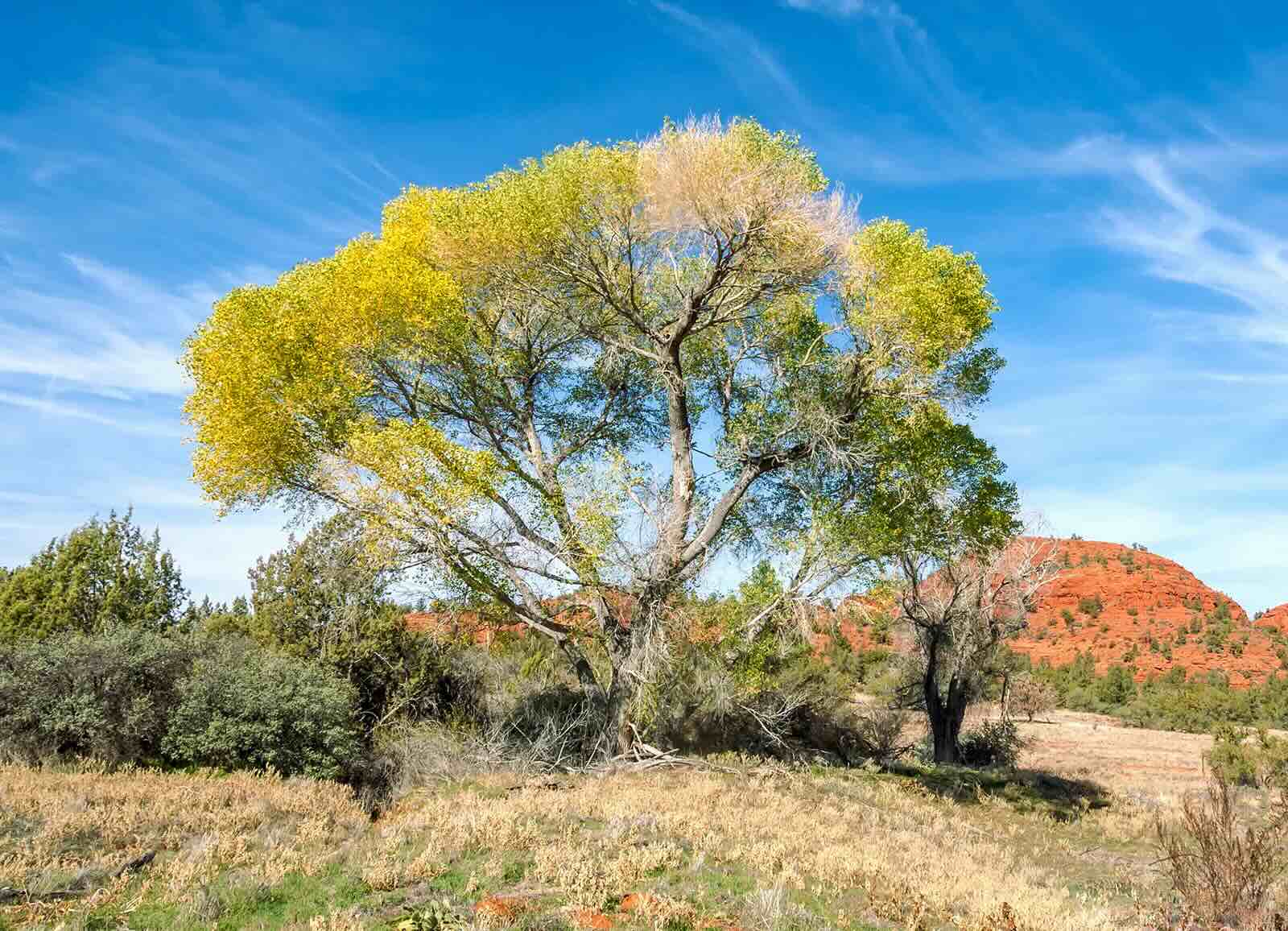
Cottonwood trees are fascinating and often overlooked giants of the natural world. Did you know that these trees can grow up to 100 feet tall? Found mostly in North America, they thrive near rivers and streams. Their leaves are heart-shaped, and they produce fluffy seeds that float through the air like snow. Cottonwoods play a crucial role in their ecosystems, providing habitat and food for various wildlife. They also have a unique ability to stabilize riverbanks with their extensive root systems. Curious about more interesting facts? Keep reading to uncover 28 amazing details about these remarkable trees!
What is Cottonwood?
Cottonwood trees are a common sight in many parts of North America. Known for their towering height and fluffy seeds, these trees play a significant role in their ecosystems. Here are some fascinating facts about cottonwood trees.
- Cottonwood trees belong to the Populus genus, which also includes aspens and poplars.
- They can grow up to 100 feet tall, making them one of the tallest trees in North America.
- Cottonwoods are fast growers, often adding 6 feet or more in height each year.
- These trees thrive in wet, sandy soils typically found near rivers and streams.
- Cottonwood leaves are triangular with a flat base, giving them a distinctive shape.
- The bark of a young cottonwood tree is smooth and greenish, but it becomes deeply furrowed and gray as the tree ages.
Cottonwood's Ecological Importance
Cottonwood trees are not just impressive in size; they also play a crucial role in their habitats. They provide food and shelter for various species and help maintain the health of their ecosystems.
- Cottonwoods offer nesting sites for birds like eagles, hawks, and owls.
- Beavers use cottonwood branches to build their dams and lodges.
- The leaves and bark are a food source for deer, elk, and other herbivores.
- Cottonwood roots help stabilize riverbanks, reducing erosion.
- Fallen cottonwood leaves enrich the soil with nutrients as they decompose.
- The trees provide shade, which helps regulate the temperature of nearby water bodies, benefiting aquatic life.
Cottonwood's Unique Reproduction
The reproduction process of cottonwood trees is quite interesting. They have a unique way of spreading their seeds, which ensures their survival and propagation.
- Cottonwoods are dioecious, meaning individual trees are either male or female.
- Female trees produce seeds encased in a cotton-like fluff, which aids in wind dispersal.
- A single cottonwood tree can release millions of seeds each year.
- The fluffy seeds can travel long distances, sometimes up to several miles.
- Cottonwood seeds require moist soil to germinate, which is why they are often found near water sources.
- The seeds have a short viability period, usually only a few weeks, necessitating quick germination.
Historical and Cultural Significance
Cottonwood trees have been significant to various cultures and have historical importance. They have been used for different purposes over the centuries.
- Native American tribes used cottonwood bark for medicinal purposes, such as treating wounds and fevers.
- The wood was used to make dugout canoes due to its buoyancy and ease of carving.
- Cottonwood trees were often planted as shade trees in early American settlements.
- The tree is a symbol of the Great Plains and is often mentioned in literature and folklore.
- Cottonwood wood is used in making plywood, crates, and other lightweight products.
- The tree's rapid growth made it a popular choice for reforestation projects.
Fun and Miscellaneous Facts
Here are some more intriguing tidbits about cottonwood trees that you might find surprising.
- Cottonwood trees can live up to 100 years or more under ideal conditions.
- The largest cottonwood tree on record is located in Bosque Farms, New Mexico, with a trunk circumference of over 42 feet.
- Cottonwood leaves produce a rustling sound in the wind, often described as soothing or calming.
- The tree's scientific name, Populus, is derived from the Latin word for "people," as these trees were commonly planted in public spaces in ancient Rome.
Cottonwood's Unique Charm
Cottonwood trees are more than just tall, leafy giants. They play a crucial role in ecosystems, providing habitats for wildlife and stabilizing soil. Their rapid growth and resilience make them fascinating subjects for nature lovers and scientists alike. Cottonwoods have a rich history, being used by Native Americans for various purposes, from crafting canoes to medicinal uses. Their fluffy seeds, often mistaken for snow, add a whimsical touch to spring landscapes.
Understanding these trees helps us appreciate their importance in our environment. They remind us of nature's incredible adaptability and the interconnectedness of all living things. Next time you see a cottonwood, take a moment to admire its beauty and remember the vital role it plays in our world. Whether you're a budding botanist or just someone who loves nature, there's always something new to learn about these remarkable trees.
Was this page helpful?
Our commitment to delivering trustworthy and engaging content is at the heart of what we do. Each fact on our site is contributed by real users like you, bringing a wealth of diverse insights and information. To ensure the highest standards of accuracy and reliability, our dedicated editors meticulously review each submission. This process guarantees that the facts we share are not only fascinating but also credible. Trust in our commitment to quality and authenticity as you explore and learn with us.
